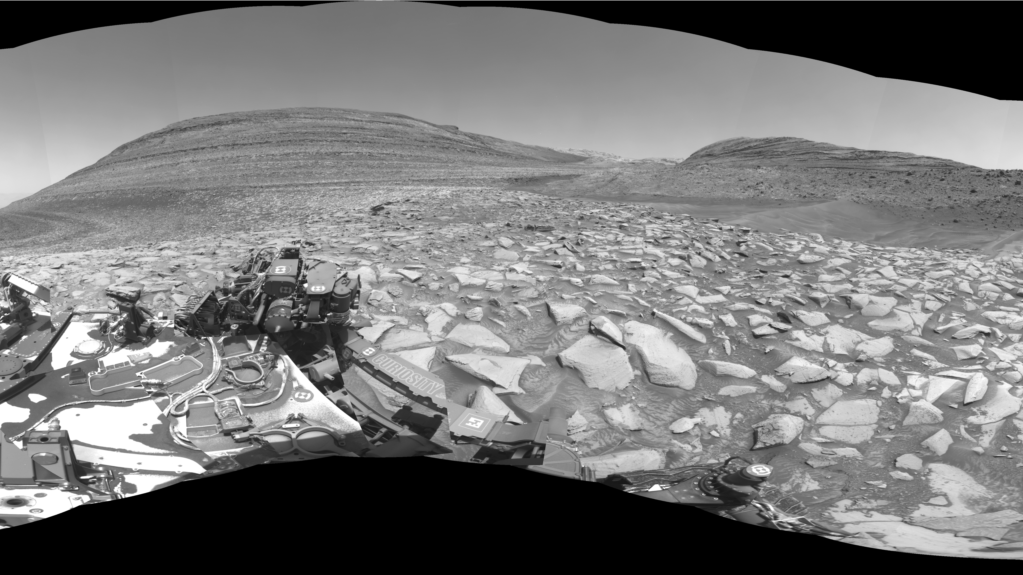The American space agency’s Mars explorer, Curiosity, has reached a new area of the planet Mars as it searches for evidence of water and possible life.
The explorer, or rover, recently arrived at an area called the Gediz Vallis Channel. Researchers said the area was chosen because evidence suggested that it once held large amounts of liquid water. The term “channel” describes a natural bed that carries water.
Curiosity arrived on Mars in 2012 and began exploring areas around the planet’s huge Gale Crater. Mars is a cold, dry desert today. But the Gale Crater area is believed to have contained a lake at one time and has shown other evidence of flowing water in the past.
A large meteor strike about 3.7 billion years ago is believed to have formed the crater. At the time, scientists believe groundwater filled Gale Crater while additional water flowed in from rivers fed by rain or melting snow. This is thought to have formed Gale Crater’s large lake.
Since 2014, Curiosity has been exploring an area called Mount Sharp, which sits about five kilometers above the floor of Gale Crater. NASA said the new area contains formations created “over millions of years amid a changing Martian climate.”
Curiosity will be searching for evidence of ancient water in areas around Gediz Vallis Channel, with studies centered on how the channel formed. NASA scientists said they do not think wind formed it because the sides of it are too high. From space, the channel looks like an ancient riverbed, the agency said. Later, the channel filled with large rocks and other forms of debris.
Last month, Curiosity documented the Gediz Vallis Channel with a 360-degree black-and-white picture captured by one of the rover’s cameras.
The rover’s new exploring activities can provide scientists with “a new way to study how the presence of both water and the chemical ingredients required for life changed over time,” NASA said. The first formations to be examined contain sulfates, which are salty minerals often created when liquid water evaporates.
NASA said Curiosity also uncovered evidence of clay minerals in the Mount Sharp area. This suggests past interactions between large amounts of water and rock.
Movements of water and minerals can also produce a material called sediment, particles that settle on the bottom of bodies of water over time. Examinations of these sediments can provide additional evidence of past water and possible life.
Ashwin Vasavada is a Curiosity project scientist with NASA’s Jet Propulsion Laboratory in California. He said in a statement, “If the channel or the debris pile were formed by liquid water, that’s very interesting.”
Vasavada added, “It would mean that fairly late in the story of Mount Sharp – after a long dry period – water came back, and in a big way.”
NASA currently operates two rovers on Mars. The other one, Perseverance, has been exploring the planet’s Jezero Crater since September 2021. It has collected rock, soil and atmospheric materials during that time. Jezero Crater is also believed to have contained large water bodies in the distant past.
Materials collected by the rovers are expected to be returned to Earth in the future. That effort, a joint mission between NASA and the European Space Agency (ESA), is planned for 2028.
I’m Bryan Lynn.

